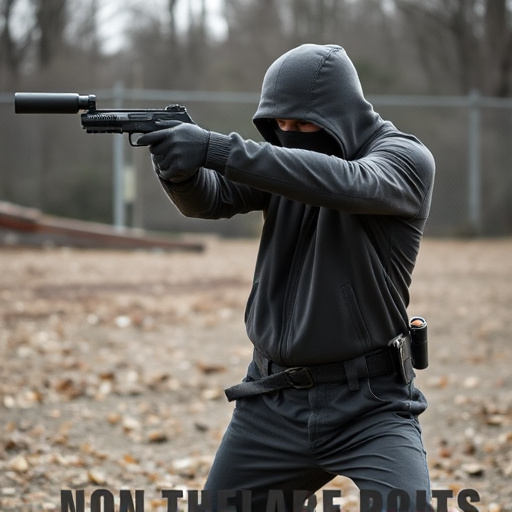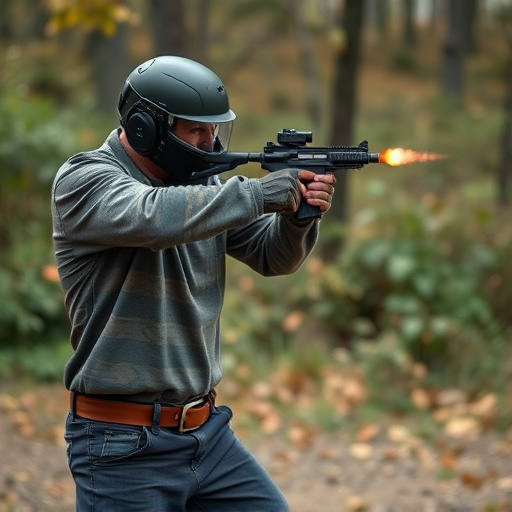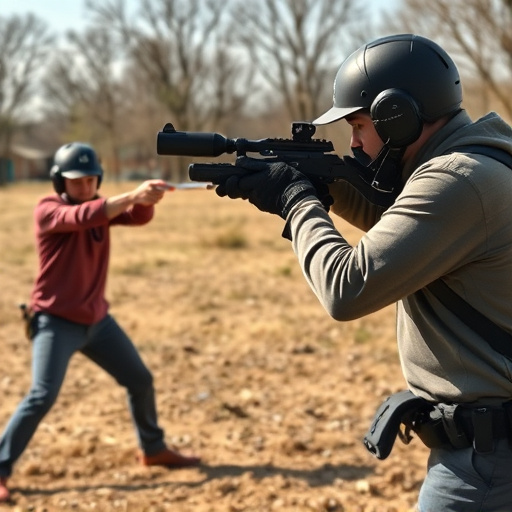Understanding electrical current spread patterns is crucial when selecting best-rated stun guns for self-defense. Higher voltage ratings and compact electrode designs enhance effectiveness, ensuring optimal impact distances in high-risk situations. Evenly dispersed electrical current across the surface area maximizes neural signal disruption. Safety should always be prioritized through proper training, maintenance, legal understanding, and choosing reputable brands with clear user manuals.
Electrical current spread patterns play a crucial role in understanding the effectiveness of stun guns, especially in self-defense scenarios. This article delves into the intricate world of current flow dynamics, exploring factors that influence its distribution within stun devices. We analyze how these patterns impact the performance and safety of best-rated stun guns for self-defense, providing insights to help users make informed choices while emphasizing responsible usage practices. By understanding these principles, individuals can navigate the market for optimal protection.
- Understanding Electrical Current Spread Patterns
- Factors Influencing Current Flow in Stun Guns
- Selecting Stun Guns Based on Current Distribution
- Safety Considerations and Best Practices for Self-Defense Devices
Understanding Electrical Current Spread Patterns

Understanding Electrical Current Spread Patterns is crucial, especially when considering self-defense tools like best-rated stun guns. These weapons utilize electrical current to incapacitate an assailant by disrupting their nervous system. The spread pattern of this current plays a vital role in determining its effectiveness and range. It’s not just about the force of the shock; it’s also about how widely the current spreads, ensuring maximum disruption without unnecessary harm.
By analyzing these patterns, users can gain insights into the optimal distance to deploy the stun gun for maximum impact. This knowledge is critical for personal safety, especially in high-risk situations where quick and effective defense is essential. Moreover, understanding spread patterns allows individuals to choose the right stun gun for their needs, ensuring they select a device that delivers the desired level of protection.
Factors Influencing Current Flow in Stun Guns

The flow of electrical current in a stun gun, and subsequently its effectiveness as a self-defense tool, is influenced by several key factors. One of the primary considerations is the voltage output, which determines the impact and stun level delivered to the target. Higher voltage ratings often result in more intense currents, potentially incapacitating the assailant faster. This is a critical factor for individuals seeking the best-rated stun guns for self-defense, as it guarantees a reliable response during high-stress situations.
Additionally, the design and materials used in the stun gun play a significant role. Conductors with lower resistance allow current to flow more readily, enhancing the overall efficiency of the device. The shape and size of the electrodes also matter; compact designs can increase contact area, ensuring maximum current transfer. This is especially important for close-quarters combat scenarios where quick, effective shocks are crucial. These factors combined contribute to a stun gun’s ability to deliver precise and powerful currents, making it an ideal self-defense mechanism.
Selecting Stun Guns Based on Current Distribution

When considering the best-rated stun guns for self-defense, understanding current distribution is key to making an informed choice. Stun guns utilize electrical current to disable an aggressor temporarily, and the pattern in which this current spreads can significantly impact effectiveness. Look for models that distribute current evenly across their surface area, ensuring maximum contact with the target. This uniform distribution maximizes the disruption of neural signals, leading to a more reliable stun.
Focus on stun guns with optimized current paths designed for better penetration and conductivity. Features like stainless steel electrodes or advanced wiring can enhance current flow, making them ideal for self-defense scenarios. By selecting a stun gun based on its current distribution, users can be confident in the device’s ability to deliver a powerful and reliable shock when needed most.
Safety Considerations and Best Practices for Self-Defense Devices

When considering self-defense devices, especially best-rated stun guns, safety should always be at the forefront of your mind. These powerful tools can provide a crucial defense mechanism, but their improper use can lead to serious consequences. It’s essential to understand not just how they work but also the potential risks involved. Always prioritize personal safety and ensure you are trained in the correct usage, including proper handholding and targeting techniques.
Best practices include keeping your device easily accessible yet secure, ensuring regular maintenance, and understanding local laws regarding stun guns. Choose reputable brands that offer detailed user manuals and safety guidelines. Additionally, consider attending self-defense workshops to learn not just how to use these devices but also de-escalation techniques, which can be as effective as physical force in avoiding dangerous situations.
Electrical current spread pattern analysis is a crucial aspect of understanding how stun guns operate and selecting the best-rated stun guns for self-defense. By considering factors like current distribution and safety practices, users can make informed decisions when choosing self-defense devices. Proper knowledge ensures optimal performance and enhances personal safety during critical situations.
